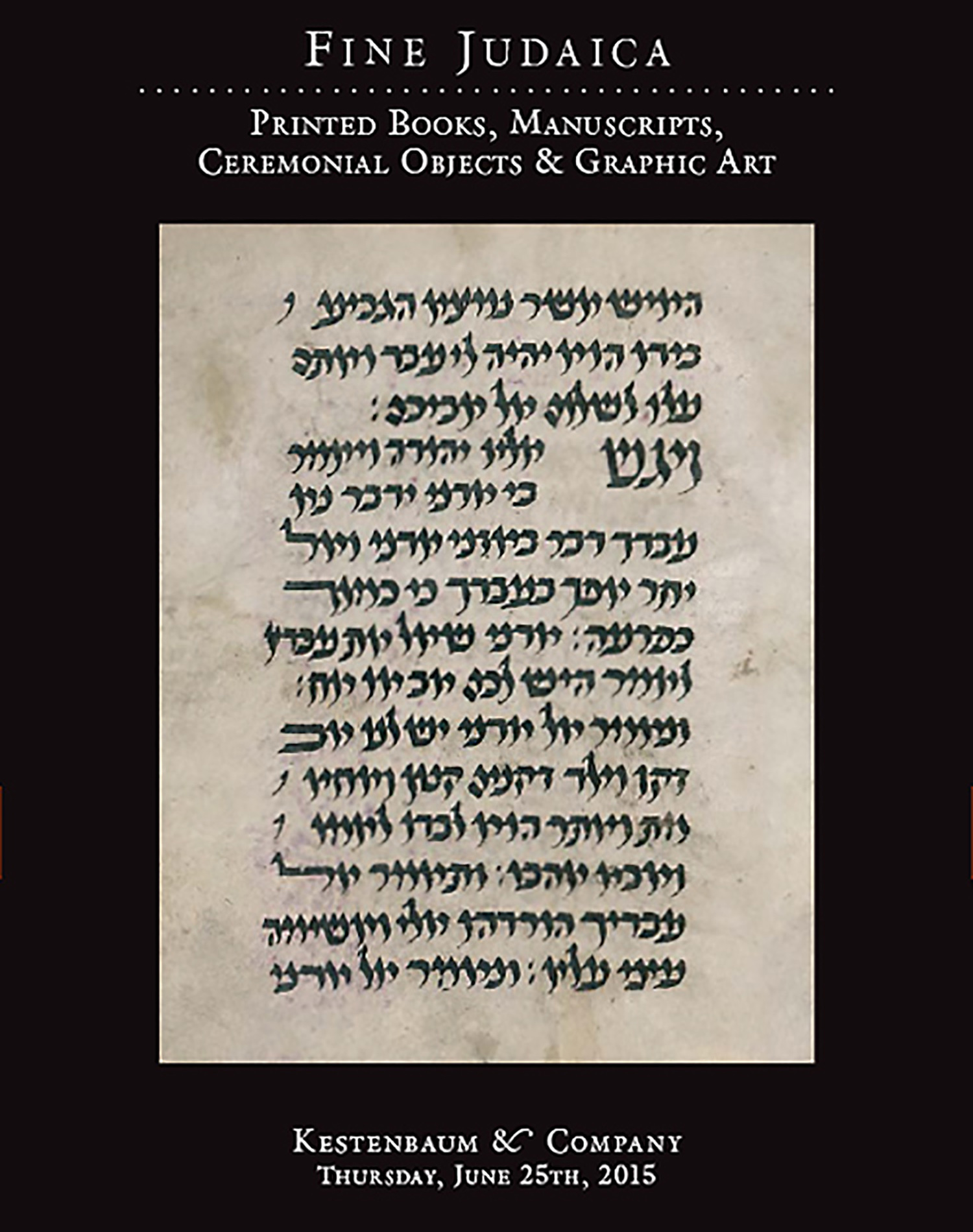MOSES BEN MAIMON. (MAIMONIDES / RaMBa’M). Moreh Nevuchim [“Guide for the Perplexed.”]. Translated from Arabic into Hebrew by Samuel ben Judah ibn Tibon. With commentaries of Shem Tov and Ephodi.

AUCTION 65 |
Thursday, June 25th,
2015 at 1:00
Fine Judaica: Printed Books, Manuscripts, Ceremonial Objects and Graphic Art
Lot 33
(ISSERLES, MOSES).
MOSES BEN MAIMON. (MAIMONIDES / RaMBa’M). Moreh Nevuchim [“Guide for the Perplexed.”]. Translated from Arabic into Hebrew by Samuel ben Judah ibn Tibon. With commentaries of Shem Tov and Ephodi.
Venice: Alvise Bragadin-Meir Parenzo 1551
Est: $10,000 - $15,000
PRICE REALIZED $22,000
<<This second edition of the Moreh Nevuchim contains extensive manuscript notes that were copied from the personal copy of the Moreh Nevuchim that belonged to the ReM’A.>>
A native of Cracow, the ReM’A, Moses Isserles (c. 1525-72), demonstrated in his work Torath Ha’Olah, his mastery of rationalist, particularly Maimonidean philosophy. This is evident from these marginal notes to the Moreh Nevuchim. This rationalist bent aroused the ire of his contemporaries such as R. Solomon Luria (Maharsha’l) and R. Judah Löw (Mahara’l). R. Moses Isserles is most celebrated for his lasting contributions to Jewish law: “Darchei Moshe” on Joseph Karo’s Beith Yoseph, as well as his glosses to Joseph Karo’s Shulchan Aruch.
The copyist of the marginal notes in this volume signs the ReM’A’s name at least six times in various ways. For example, see f. 47b: “Kein nirah li Moshe Isserles MeCracow, and similarly on f. 48a, 10a (“I copied … from R. Moshe Isserles of Cracow.”). Four other notes starting with the words “Amar Moshe” (see f. 99b and 100a) also likely from the ReM”A.
On these notes, see Y. M. Peles, Kethav Yad Chadash - HaGahoth HaRem’a VehaLevush al Moreh Nevuchim, in: Yeshurun Vol. 9, pp. 756-67. Peles surmises that many of the anonymous notes here are also from the ReM’A. He thus posits that present in this volume are approximately “one hundred comments from the ReM’A and possibly more.” Peles believes that the notes in the name of R. Mordechai Jaffe (RaM’Y) are from an original draft before the published edition of Levush Pinath Yikrath (Lublin, 1595). Many notes are anonymous, stating “Amar HaKothev” (the writer states), while others are signed “Biur” (explanation). Other notes are signed with the initials “Aleph Ayin,” possibly R. Aaron Azriel (Zeligman) Rosh Beth Din in Frankfurt. Peles writes these marginal notes were written between 1572-1600, that is, after the death of the ReM’A. The writer obviously had access to other manuscripts as well. For example, on f. 14a he quotes from Samuel ibn Tibbon’s unpublished commentary on Koheleth and on f. 51b he cites a correction found in the “Moreh of Mahri’k” (which is either the initials of R. Yoseph Katz, the brother-in-law of the ReM’A, or R. Yitzchak Katz, the son-in-law of the Mahara’l). The writer is sure of his own scholarship and many times criticizes his predecessors. He cites his own opinion ending with the words “Vezehu Hanachon” [and this is correct], see f. 29b.
Some of the ReM’A’s notes to the Moreh Nevuchim were published by Joseph Kohen Tzedek in his short-lived periodical Otzar Chochmah, Lemberg 1861 and 1865. These were from a different, torn copy, and apparently written in the Rema’s hand.
